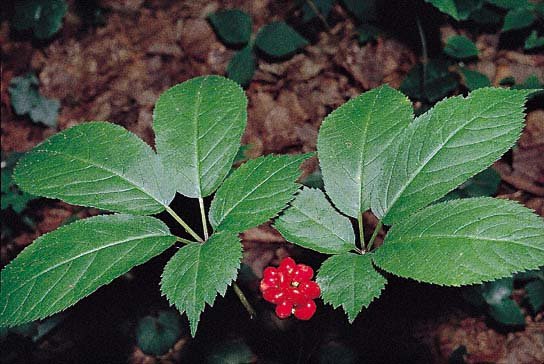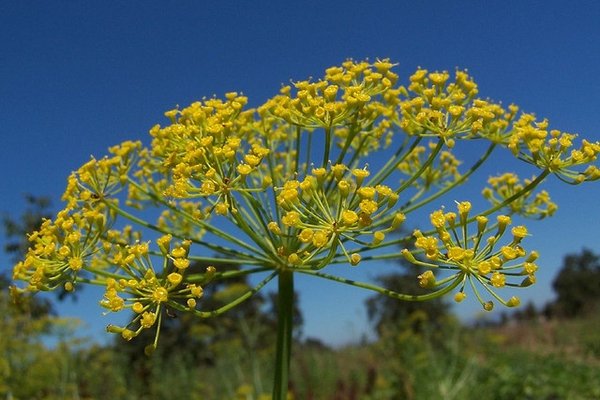Sage – (Salvia officinalis)
Sage, or Salvia officinalis, is more than just an ordinary herb. It’s a plant steeped in history and packed with benefits that have captivated people for centuries. From its aromatic leaves to its medicinal properties, sage has become a staple in kitchens and natural remedy kits around the world.
This versatile herb isn’t just for culinary use; it’s a powerhouse of health benefits. Whether it’s used in cooking, as a tea, or even in aromatherapy, sage offers a myriad of uses that can enhance your well-being. Let’s dive into the world of sage and discover what makes it such a remarkable plant.
Key Takeaways
- Historical Significance: Sage, or Salvia officinalis, has a rich history dating back thousands of years, revered for its medicinal properties and symbolic meanings across different cultures. It was considered a symbol of immortality and wisdom, underscoring its importance beyond culinary uses.
- Culinary Uses: Sage’s distinct earthy and peppery flavor makes it a versatile herb in cooking, enhancing dishes ranging from meats to soups. It offers nutritional benefits, including essential vitamins and minerals, and its antioxidant properties contribute to health and food preservation.
- Medicinal Properties: Sage boasts significant health benefits, including antioxidant, anti-inflammatory, and antimicrobial properties. Its compounds, such as rosmarinic and carnosic acid, have been shown to support cognitive function, skin health, and provide natural remedies for various ailments.
- Sage Tea Benefits: Sage tea leverages the herb’s medicinal properties in a soothing format, offering cognitive, digestive, and antimicrobial benefits. It serves as an accessible way to incorporate sage’s health advantages into daily routines.
- Aromatherapy Benefits: The essential oil extracted from sage provides mood-enhancing, cognitive-boosting, and air-purifying benefits in aromatherapy practices. Its crisp, earthy aroma can uplift mood, promote relaxation, and improve cognitive function when used in diffusers or applied topically.
History of Sage Salvia officinalis
Sage, scientifically known as Salvia officinalis, offers a rich tapestry of historical significance that traces back thousands of years. Originally native to the Mediterranean region, this herb has found its way into various cultures, each of which has recognized its value beyond mere culinary use.
Historians believe that sage was a symbol of fertility and immortality for the Egyptians, while the Romans treated it as a sacred herb, requiring special ceremonies during its harvest. They not only valued it for its medicinal properties but also believed it could impart wisdom and improve memory. This belief in sage’s cognitive benefits has survived into modern times, with recent research supporting its potential to enhance cognitive function and protect against neurodegenerative diseases.
During the Middle Ages, sage was a cornerstone of the monastic gardens, known amongst monks as “S. Salvator,” translating to “sage, the savior.” It was a part of the pharmacopeia of the time, used to treat a variety of ailments from fevers and liver disease to heart problems. Its antibacterial and preservative qualities were well regarded, making it a common practice to use sage in preserving meats and other food items before the advent of refrigeration.
In 17th century Europe, sage was so highly valued that traders would exchange three chests of tea leaves for a single chest of sage leaves, underscoring its worth beyond just a culinary herb. These historical anecdotes highlight sage’s multifaceted importance throughout human civilization, not just as a flavorful addition to dishes but as a plant deeply intertwined with human health and culture.
As research continues to unveil the depth of sage’s benefits, it’s clear that our ancestors’ reverence for this herb was well-founded. Studies indicate that compounds found in sage, such as rosmarinic acid and carnosic acid, have potent antioxidant, anti-inflammatory, and antimicrobial properties, further validating sage’s historical uses and confirming its place in both traditional and modern medicine.
Culinary Uses of Sage
Sage, with its earthy and slightly peppery flavor, is a staple in various cuisines worldwide. Its versatility allows it to complement a wide array of dishes, from meats to soups and even desserts. The herb is not just a culinary delight but also boasts a rich nutritional profile, including vitamins A, C, and E, along with minerals such as magnesium and zinc.
In the kitchen, sage’s distinct flavor is most commonly used in stuffings and pairs wonderfully with pork, poultry, and sausage. It’s also a key ingredient in the Italian sausage seasoning and is celebrated in the Mediterranean diet for its ability to enhance the flavors of fatty meats without overwhelming them. Fresh leaves can make a delicious and aromatic addition to salads, while dried sage is often used in rubs and marinades.
Beyond its use as a seasoning, sage has been the subject of research for its potential health benefits. Studies have highlighted its antioxidant properties, which can help protect the body’s cells from damage caused by free radicals. The herb’s antimicrobial qualities also suggest it can aid in preserving foods by inhibiting the growth of bacteria and fungus, making it not only a culinary asset but a functional food ingredient.
One of the more novel uses of sage in the culinary world involves infusing it into oils and butters. This technique not only imparts a rich flavor to the fats but also allows the aromatic qualities of the herb to be preserved in a form that can be conveniently used in a multitude of recipes. Such innovations underscore sage’s adaptability and enduring popularity in culinary traditions around the globe.
It’s clear that sage’s contribution to the culinary arts goes beyond its taste profile. Whether fresh or dried, it brings a depth of flavor and a host of potential health benefits to dishes, making it a cherished herb among chefs and home cooks alike.
Medicinal Properties of Sage
Sage, or Salvia officinalis, isn’t just renowned for its culinary applications but also for its impressive medicinal properties. Historical use of sage in traditional medicine has been substantiated by modern scientific research, revealing its potential as a natural remedy for a range of health issues.
Antioxidant Effects
One of the standout qualities of sage is its high antioxidant content. Antioxidants play a crucial role in protecting the body’s cells from damage caused by free radicals. Studies have shown that sage contains over 160 distinct polyphenols, which are plant-based chemical compounds that act as antioxidants. These compounds can help support the body’s immune system, promote healthy skin and reduction of chronic diseases.
Cognitive Function and Memory
Research suggests that sage has cognitive-enhancing properties, particularly in the improvement of memory and focus. A study published in the Journal of Pharmacology and Experimental Therapeutics highlighted that sage extract has the ability to improve cognitive function and may even offer benefits in the treatment of cognitive decline associated with Alzheimer’s disease. The active compounds within sage, including rosmarinic acid and carnosic acid, contribute to these neurological benefits.
Antibacterial and Antimicrobial Properties
Sage also possesses antibacterial and antimicrobial qualities, making it a formidable natural remedy against certain types of bacterial and fungal infections. A study found in the Journal of Agricultural and Food Chemistry reported that sage oil could effectively combat several strains of bacteria, including E. coli and Salmonella. This makes sage not only a valuable herb in the kitchen but also in the medicine cabinet, acting as a natural line of defense against microbial invasions.
Anti-inflammatory Effects
Inflammation is at the root of many chronic conditions, and sage’s anti-inflammatory effects can be a natural solution for reducing it. Its active components have been shown to suppress the inflammatory responses, providing relief in conditions such as arthritis and asthma. The inclusion of sage in one’s diet or as a supplement could therefore contribute to overall well-being by minimizing inflammation-related symptoms.
By incorporating sage into daily routines, either through diet or as a supplemental form, one can leverage these medicinal properties for improved health and vitality.
Using Sage as a Tea
Sage tea, made from the leaves of Sage Salvia officinalis, serves as more than just a soothing beverage; it’s a time-honored remedy steeped in history and tradition. Utilizing sage in tea form takes advantage of its medicinal properties in a gentle, easily accessible manner. Not only does it offer a unique flavor profile—an earthy base with hints of mint—but it also carries a plethora of health benefits ranging from enhanced cognitive function to improved digestive health.
When preparing sage tea, the process is straightforward yet requires a mindful approach to preserve the herb’s potent qualities. Boiling water should be poured over fresh or dried sage leaves and left to steep for about 5 minutes. This method ensures the extraction of sage’s volatile oils and beneficial compounds, maximizing its therapeutic potential.
Research supports the health claims associated with sage tea, particularly its rich antioxidant content. A study published in the Journal of Agricultural and Food Chemistry highlights the significant antioxidant capacity of sage, attributing it to the presence of rosmarinic acid and other phenolic compounds. These antioxidants help neutralize harmful free radicals in the body, potentially reducing the risk of chronic diseases.
Moreover, sage tea’s impact on cognitive health cannot be understated. A clinical trial found evidence supporting the cognitive-enhancing effects of sage, including improvements in memory and attention in healthy adults. This makes sage tea not only a comforting beverage but also a potential tool for maintaining brain health.
In addition to cognitive benefits, sage tea is known for its antimicrobial properties, making it an effective natural remedy for throat infections and dental abscesses. Its anti-inflammatory effects further aid in relieving discomfort from digestive issues, proving sage tea to be a versatile option for those seeking natural health solutions.
Incorporating sage tea into daily routines is easy and beneficial. Whether enjoying it as a warm drink in the morning or using it as a refreshing iced beverage during the day, sage tea offers a simple way to tap into the ancient wisdom of herbal medicine while embracing the myriad of health benefits it has to offer.
Aromatherapy Benefits of Sage
Sage, or Salvia officinalis, is not only celebrated for its culinary and medicinal applications but also for its impressive aromatherapy benefits. The essential oil derived from sage possesses a crisp, earthy aroma that’s highly sought after in the world of aromatherapy. This section delves into the therapeutic properties of sage essential oil and how it can be incorporated into daily life to enhance well-being.
First and foremost, sage essential oil is renowned for its ability to uplift mood and reduce stress. Inhaling the aroma of sage can trigger the release of serotonin in the brain, which is a key hormone that stabilizes mood, feelings of well-being, and happiness. Research published in the Journal of Traditional and Complementary Medicine highlights sage’s effectiveness in alleviating mood disorders and suggests its potential as a natural antidepressant.
Furthermore, sage essential oil plays a significant role in enhancing cognitive function. Studies reveal that the compounds in sage can improve memory, attention, and overall cognitive performance. A study in the Journal of Clinical Pharmacy and Therapeutics found that sage oil exposure positively affects cognitive performance and could be beneficial for patients with neurodegenerative diseases.
The antimicrobial properties of sage essential oil make it a valuable asset in purifying the air. It can effectively eliminate airborne bacteria and viruses when used in diffusers, creating a cleaner and healthier living environment. This property is particularly beneficial during the cold and flu season, offering a natural way to protect against common airborne pathogens.
To incorporate sage essential oil into aromatherapy practices, one can:
- Use a few drops in an essential oil diffuser to promote relaxation and improve indoor air quality.
- Apply diluted sage oil to the temples or wrists as a natural fragrance that also enhances mental clarity.
- Add sage essential oil to bath water for a soothing and invigorating bath experience.
The versatility and benefits of sage in aromatherapy are profound. Whether it’s to invigorate the senses, purify the air, or support mental well-being, sage essential oil is a powerful ally in the pursuit of health and happiness.
Conclusion
Sage, with its rich history and versatile applications, stands out as a remarkable herb. From enhancing culinary creations to offering significant medicinal benefits, it’s a plant that embodies the essence of nature’s bounty. The exploration into sage essential oil further underscores its value, showcasing its potential to uplift, heal, and purify. By integrating sage into daily routines, whether through cooking, topical application, or aromatherapy, individuals can tap into an ancient source of wellness and joy. Embracing sage is more than adopting an herb; it’s a step towards holistic health and a harmonious connection with the natural world.






